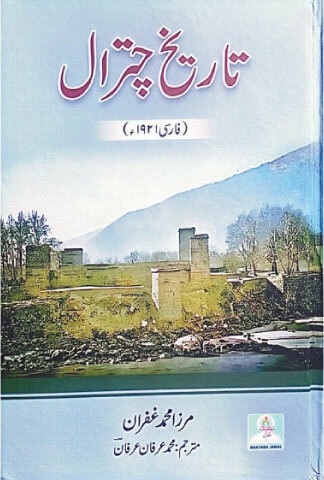
The ‘burnt’ book on history of Chitral emerged as the bestseller in the local market as its rendition in Urdu was published because all its copies in Persian had been burnt to ashes by the ruler of the state of Chitral soon after they reached the valley after being published in Peshawar.
Titled as Tareekh-i-Chitral, the book had been written by Mirza Mohammad Ghufran, who served as one of the top ranking functionaries of Katoor Dynasty (1500 to 1969 AD) in those days. He had written the book on the orders of his master Sir Shujaul Mulk, who ruled the state from 1895 to 1936.
Faizullah Khan, the owner of a leading bookshop of the city, told Dawn that the book was sold like a hot cake soon after its first consignment reached there from Lahore-based publisher and he had to place demand to the publisher for the second and third batches, which too exhausted shortly.
He said that like many other booksellers of the city, he had still a long list of aspirants of the book and he was waiting for its fourth batch as he was tired of listening to inquiries of people about arrival of the book.
It was burnt by the ruler of state more than a century ago
Qayum Shah, a college teacher of history in the city, told Dawn that people having interest in the history of Chitral, had a long lasting curiosity about the book as to what it contained that enraged the despot to throw the whole lot of books into the flames of fire and four generations of the area passed yearning to know about its contents.
He said that the book carried no startling material that may have instigated the ruler pushing him to go the extreme of destroying the whole lot of the book.
“A fair account of chronology has been presented, encompassing the period of the preceding many centuries starting from 15 century AD. Court intrigues and jealousy seems to be the major reason that made the ruler change his mind about the author holding a high office and was widely revered for his knowledge and wisdom,” he said.
Mr Shah said that the writer was an upright man, who dared to call a spade a spade. He said that he might have refracted the dictations of the ruler to represent his view in particular way and mode.
Regarding the resurfacing of the book, Shahzada Tanveerul Mulk, a literary figure of the royal family, said that the only book preserved and retained by the ruler was brought by someone of the family to local market for photocopying from where it spread to people educated in Persian.
“As great grandson of the ruler, I took it upon myself to get it translated into Urdu and successfully persuaded none other than Mohammad Irfan, a great grandson of the author to accomplish the task, which was eagerly awaited by the people,” he said.
He said that after starting the work, he lost no time and the Urdu version of the book saw the light of the day within two years thereby fading away the curiosity of the people especially those, who were interested in the history of Chitral and nurtured a number of theories about the contents of the book.
The book also carries a comprehensive description of the landscape and topography, flora and fauna, society and culture of those days which are of immense interest for every reader.
Reference Link:- https://www.dawn.com/news/1911814

